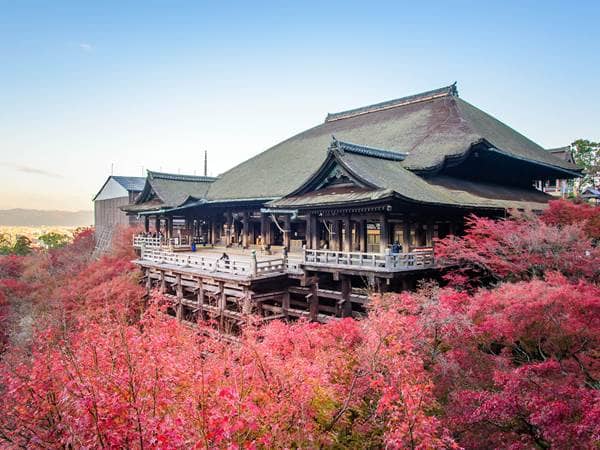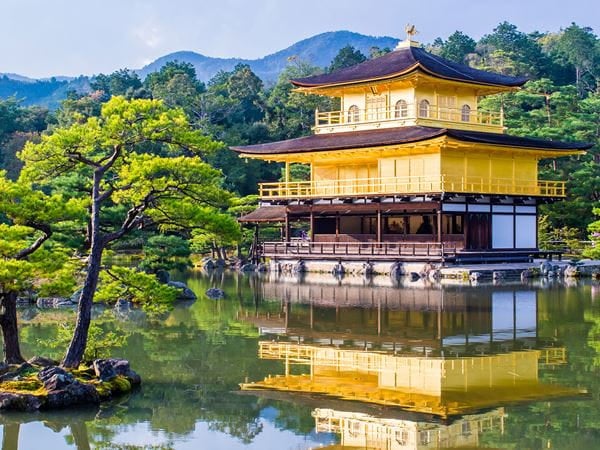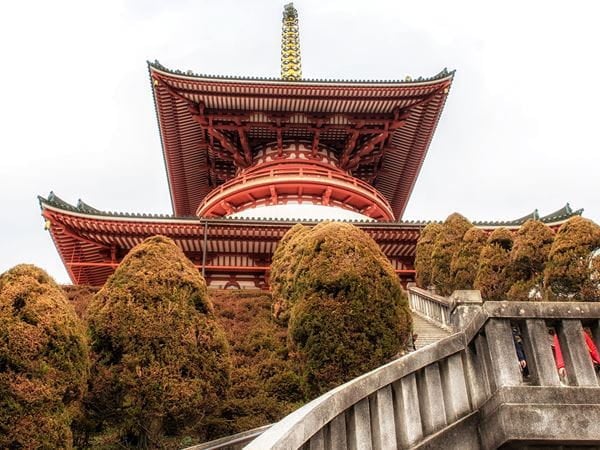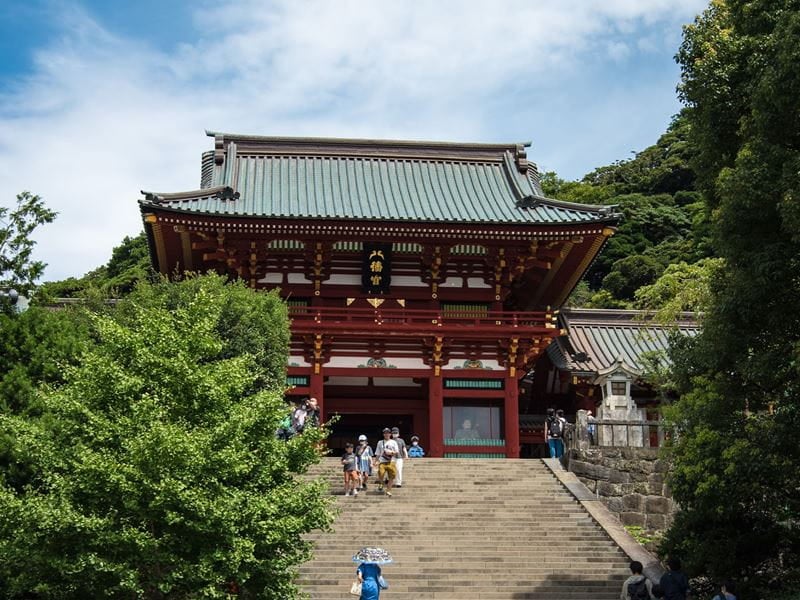
- Trending:
- History
- |
- Forgiveness
- |
- Marriage
- |
- Parenting
- |
- Suffering
- |
- Resurrection




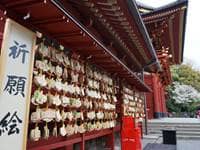
Also Known As:
Tsurugaoka Hachimangū Shrine or Tsurugaoka Hachimangū-ji.
Associated Faiths:
Also frequented by Buddhists, since (in Japan) it is often difficult to separate Buddhism and Shinto (many Japanese practicing both).
Accessibility:
Open to visitors.
Annual visitors: 2,000,000.
History
The Tsurugaoka Hachimangū Shrine is the most important and most sacred Shinto shrine in the city of Kamakura, Japan. So central is the shrine in its placement and importance, that most of the city’s matsuri (or festivals) are celebrated there. While it has functioned primarily as a Shinto Hachiman shrine (dedicated to the kami or deity of archery and war), it has also served as a Buddhist temple (associated with the Tendai branch of Mahayana Buddhism). In Japan, Shinto and Buddhism often mix—and can even be indistinguishable at times (particularly among certain sects and practitioners).
The Tsurugaoka Hachimangū-ji shrine was originally erected in 1063 CE in Zaimokuza, which is a different part of Kamakura than where the current shrine exists. Today, on the spot where the original shrine once stood, there is a small Moto Hachiman—an old but historically significant shrine. That smaller shrine is dedicated to Japan’s 15th emperor, Ōjin—who (in his deified form) is also called Hachiman, the kami who protects warriors. Hence the name Hachimangū. (It also honors Ōjin’s mother and wife.)
In the late 12th century, Minamoto no Yoritomo (the first shogun of Japan’s Kamakura shogunate) moved the shrine to its current location. Yoritomo petitioned the kami, Hachiman (i.e., Emperor Ōjin) to dwell in the shrine and to protect the government and its samurai. Thus, while the Zaimokuza Moto Hachiman shrine is dedicated to Emperor Ōjin, his kami (or spirit) is said to dwell in the Tsurugaoka Hachimangū of Kamakura. And it is primarily, though not exclusively, there that practitioners go to petition the kami Ōjin in order to gain favors and blessings.
In 1280 CE, several important artifacts (housed in the temple’s inner sanctum) were stollen. After they were removed from the shrine, arsonists—presumably the same individuals who robbed the shrine—set fire to the temple, doing significant damage to the sacred site. Some living at the time of the arson claimed that it was a result of the nation’s shogunate (or leadership) neglecting to give heed to the prophesies of the 13th century Japanese Buddhist priest, Nichiren—who is said to have warned of a pending foreign invasion as well as certain natural disasters. The consequence was a sense that Japan was being rejected by Buddhist “deities” because of its bad national leadership.
While, for nearly 700 years, the Tsurugaoka Hachimangū edifice functioned as both a Shinto shrine and a Mahayana Buddhist temple, such is no longer the case. With the implementation of Japan’s 1868 “Shinto and Buddhist Separation Order,” all Buddhist related structures on the site, as well as Buddhist artifacts, embellishments, and religious objects, were destroyed or sold, turning the shrine back into a completely Shinto edifice.
Religious Significance
In Shinto tradition, there are kami or spirits everywhere. Trees have kami, bodies of water have associated kami, rocks may have kami, as can human-made things, such as a possession, vehicle, statue, shrine, etcetera. While Shinto kami are not omnipotent or omnipresent, they are perceived as real, divine, and very powerful. Thus, they are revered, and genuine practitioners consistently do much to ensure that the kami are kept happy and appeased, so that the land and people of Japan will be blessed and fruitful, and so that individual requests (made to kami at Shinto shrines and home shrines, or kamidanas/Butsudans) will be heard and affirmatively answered.
While various Shinto shrines can be dedicated to a specific kami (spirit or god), one can worship and petition various kami at any given shrine or kamidana. That being said, the Tsurugaoka Hachimangū Shrine is associated with Japan’s 15th emperor, Ōjin—who (in his deified form) is the kami who protects warriors. Thus, of Japan’s more than 100 thousand Shinto shrines, this one is associated with national defense or the protection of those who protect the nation—its military. Thus, the pseudo-patriotism so often associated with Shinto is significantly associated with this “sacred site,” in that its primary kami is a former emperor and a current protector of Japan, which is (in Shinto belief) the “chosen land” or “holy land” founded by the gods (or kami) themselves. For obvious reasons, a very sacred site.
As noted, Shinto kami are not all-powerful or everywhere present beings. Thus, they are traditionally understood to be restricted or limited in their ability to curse or bless practitioners based on that given kami’s sphere or existence and influence. For example, a kami of the water can only punish people through water (e.g., floods, droughts, etc.) or bless them through water (e.g., ending a drought so that crops grow abundantly, or so that sufficient drinking water is available for worshipers). However, a kami of the water could not cause an earthquake, a fire, an electrical storm, etc. Thus, there are limitations. This is no different for Ōjin (also called Hachiman). Practitioners make pilgrimages to the Tsurugaoka Hachimangū Shrine, not simply to encounter a piece of Japanese history, but also so that they can request the assistance of the kami in their lives, studies, work or family life.
Interestingly, one of the major draws of the Tsurugaoka Hachimangū Shrine was a 1,000-year-old gingko tree that stood near the temple’s entrance. While it did not survive the winter of 2010, its presence near the entrance of the temple had spiritual significance for pilgrims who visited the site. Just as passing through the shrine’s red Torii Gate is a reminder to practitioners that they are entering the realm of the kami, this ancient gingko tree was the habitation of at least one kami, reminding those who entered the shrine that these divine spirits are present in abundance at this “sacred site.” Thus, the 21st century loss of this ancient reminder was a devastating blow to the temple’s symbolic messaging.
If one understands the ever-present nature of the kami—particularly at a Shinto shrine—one cannot help but recognize that the Tsurugaoka Hachimangū Shrine is “sacred” ground. For many of the older generation, the appeasement of the kami brings blessings and protection to practitioners who visit the holy houses. The sacral nature is not in the building, or the Torii gate one must pass through, the ancient gingko tree that once stood on the site, or even in the ritual obligations. No, the “sacred site” is found in the land and the kami who dwell on it. All of the buildings and their accoutrements are simply vehicles to help the pilgrim connect with the divine kami.


